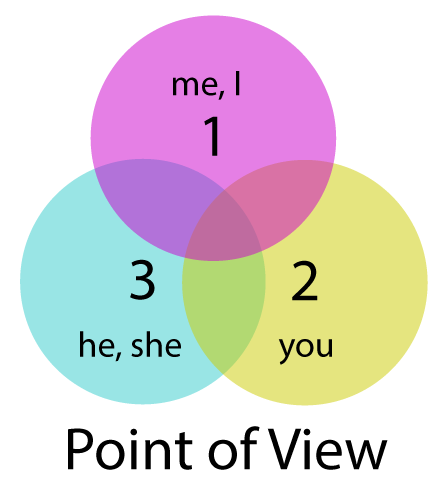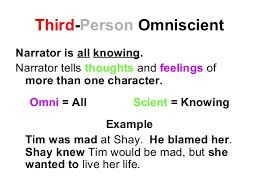Overview
Writers use different points of view in essays or stories in order to present and reveal information to their readers. They may choose first-person, second-person, or two types of third-person narrative devices.
First Person
First-person narratives tell the story from inside the mind and feelings of a chosen narrator, using pronouns such as I, me, mine, we, and us. For example, “During my summer vacation, I went up in a hot-air balloon. It was my first flight, and I was so excited to watch the ground grow smaller and further away.”
Second Person
Second person narratives are directive, using pronouns such as you and yours. The reader is drawn into the action and told to do things. It is rarely used in essays or stories, but is usually limited to instructional material and directions. “Imagine that you went on a hot-air balloon ride during your summer vacation, and it was your first flight. What would you see, feel, hear, taste and smell during the trip? Describe your feelings and emotions in an essay.” When you write that essay, you will not answer the questions in the second person.
Third-Person Limited
Third-person narratives tell the story in a more detached way, using pronouns such as he, she, him, her, it, they, and them. When the point of view is limited, the perspective is from one character’s point of view, limited to what that character is thinking, feeling, and observing. That character may be the main character (protagonist) or one of the secondary characters, as long as that character can observe the actions of others. For example, “Jill spent her summer vacation in Albuquerque, New Mexico, and rode on a hot-air balloon for the first time. She was excited about the opportunity, and often reflected on it as the high point of that summer. She watched over the side of the basket as the people waiting on the ground grew smaller and smaller.”
Third-Person Omniscient
Third-person omniscient point of view uses the same pronouns, but differs in perspective. The narrator is not limited to one characters’ point of view, but can also tell what other characters are thinking and feeling. In the third-person omniscient point of view, the narrator can tell how Jill feels on her first hot-air balloon flight, talk about what Jane is thinking as she waits on the ground for her turn, and what the more experienced passengers in the balloon are thinking and feeling.
Interested in English tutoring services? Learn more about how we are assisting thousands of students each academic year.
SchoolTutoring Academy is the premier educational services company for K-12 and college students. We offer tutoring programs for students in K-12, AP classes, and college. To learn more about how we help parents and students in Columbia, SC: visit: Tutoring in Columbia, SC





